San Blas
After a week in Linton Bay Marina, it was time to make our way to the San Blas Islands. Many cruisers had spoken of these islands, describing them as truly unique and like paradise. So, it was with much excitement that we set off for Chichime, one of the closest group of islands to Linton Bay, approximately 45 miles away. Although there was a fair bit of swell, we made fantastic progress, taking just 7 hours and 20 minutes, averaging over 6 knots. A couple of Topic Birds followed us for a few miles.
 |
The official anchorage in Chichime is between two islands but it was packed, so we decided to anchor on the leeward side of one of these islands. Our friends Charlie and Pamela from yacht Castalia and Gary and Louise from yacht Plan B4 were already there.
The following day all three boats went ashore to explore, and we even took the rib out to some of the other surrounding islands to take a look.
The San Blas is an archipelago in northeast Panama, comprising of 365 islands and cays, of which only 49 are inhabited.
It is home to the indigenous people known as the Guna. The San Blas Islands and the associated mainland territory are called Guna Yala by the Guna Indians, who effectively control this quarter of Panama. There are around 55,000 Gunas, which is about 10% of what their numbers were before the invasion of the Spanish Conquistadors.
The history of the Gunas is a long one. Their forefathers lived in the Darien mountains on the mainland, but because of floods and other problems, they slowly migrated to the islands. This had some benefits, such as no insects, wild animals or snakes and it also afforded them better protection from other tribes. However, in the 17th and 18th centuries, the Gunas encountered the Spanish Conquistadors, pirates and privateers, disease and other invaders. In 1750, the Gunas took matters into their own hands and attacked intruding settlers. In 1785 a treaty was signed between the Gunas and the Spanish authorities, allowing them to live in peace. The Republic of Panama was established in 1903 and the government established repressive police posts. By 1915, a Latino Governor was elected to dictatorially rule over Guna Yala. On 21 February 1925, the Gunas rebelled, killing Panamanian police and when the news reached Panama City, the government immediately mounted a military campaign. It was only due to the quick intervention of the United States Navy that this bloody retaliation was prevented. Since then, the Gunas live in peace. Although Guna Yala is part of Panama, it is now ruled autonomously by the Guna. On 4 March 1925, the Gunas agreed to be part of Panama on the condition that the Panamanian government respect their tribal laws, traditions and culture. In 1953, they were granted full administrative and judicial powers. They have also adopted their own flag. Since 1925, no Guna has been allowed to intermarry with non-Gunas. This has led to some genetic quirks and there are now many albino Gunas.
As the Gunas have their own flag, whilst cruising the islands, we displayed both the Panama and Guna courtesy flags.
As the Gunas have their own flag, whilst cruising the islands, we displayed both the Panama and Guna courtesy flags.
After two nights at Chichime, we sailed 15 miles to another group of islands, collectively known as the Hollandes Cays. The East Hollandes Cays is reported to be the most scenic of all the islands, and is famous for its 'swimming pool' anchorage. Once again, the anchorage was busy, so we all opted to anchor behind Banedup Island, More commonly known as 'bug island' due to the many sand flies. Fortunately, it was consistently windy whilst we were there, so we weren't bothered by the sand flies at all. We stayed here just under a week and were joined by our Norwegian friends Kaia and Kjell on yacht 2K. We were keen to explore the swimming pool anchorage and the reef beyond it. The colour of the water here just has to be seen to be believed. It is so clear you can see why it gained its nickname. We took the ribs out to the reef and drift snorkeled back to the swimming pool anchorage. We saw some stingrays, a few fish and a huge sand dollar. Kaia and Kjell were also lucky enough to have seen a couple of nurse sharks too.
A small island on one end of the swimming pool anchorage is referred to as BBQ island, as many cruisers go ashore to hold barbecues. We took the rib over to have a look and were greeted by a Guna man who helped us drag the rib onto the beach. There was a small charge of $3 dollars to go ashore but it was worth it. It was spotlessly clean and an ideal place to chill out and take in the scenery.
We also investigated the 'hot tub' anchorage. and took a walk around Tiadup island.
On this island, we found a Guna family in residence. They told us they were there for 6 weeks. The land in the Guna Yala is not divided into individual properties and there are no fences. Tribe members can pass through and benefit but do not claim possession. Between all of us, we gave them some rice, onions and sweets for the children. They welcomed us to come ashore and they showed us some 'Molas' the ladies had made.
The San Blas is famous for its 'Molas'. A Mola is a hand made textile that forms part of the traditional women's clothing. The women wear two identical molas, one on the front and one on the back of their blouse. In the Guna language, 'mola' means 'shirt' or 'clothing'. Before the arrival of the Europeans, the Guna wore very few clothes and decorated their bodies with colourful designs. When the Missionaries encouraged them to cover up, they copied these designs into their molas. Traditional molas have geometric designs on them but over the years, the Gunas have also created molas depicting birds, animals and fish to appeal to a wider audience. The price varies depending on the intricacy of the design and quality of the sewing.
Molas are hand made using a reverse applique technique. Several layers of fabric (usually cotton) are sewn together. The design is then formed by cutting away parts of each layer. The edges of the layer are then turned under and sewn down. Often, the stitches are nearly invisible. The finest molas have extremely fine stitching, made using tiny needles. The largest pattern is typically cut out from the top layer, and progressively smaller patterns from each subsequent layer, thus revealing the colours beneath in successive layers.
Some molas also incorporate patches of contrasting colours, to introduce additional variations of colour. Each mola takes between one and six months to make. They have such an importance for the Guna people, and their traditional identity that they can be considered responsible for the independent status of the Guna Yala.
 |
| Photo courtesy of 2K |
Of course, we couldn't come to the San Blas and leave without a mola, so we ended up buying three! One was traditional with a geometric design, another with two horses on it. The third one, depicting a fish was actually being worn by the Guna lady selling the molas. When she saw me admiring it, she took it off her blouse to sell to me. The Guna ladies regularly change their molas when they get bored with a design.
Sadly, our time in the San Blas came to an end all too soon. Even though our visit was short and sweet and we only visited a small fraction of the islands, we were glad we had made the effort. Words simply cannot describe how beautiful the islands are and how peaceful it is.
Next stop, a night at anchor in Portobelo, then on to Shelter Bay Marina and to make arrangements to transit the Panama Canal.
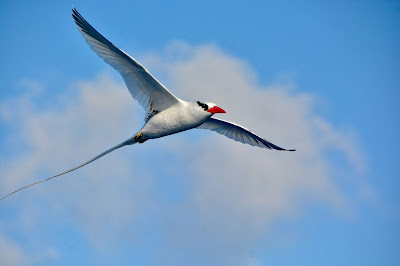
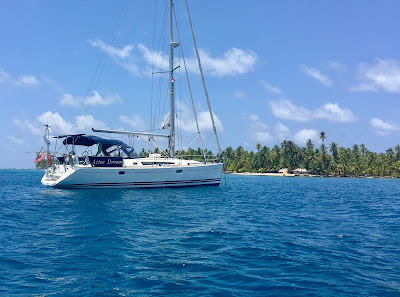




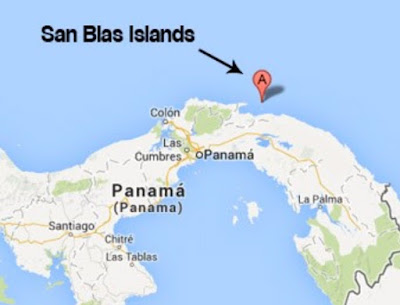

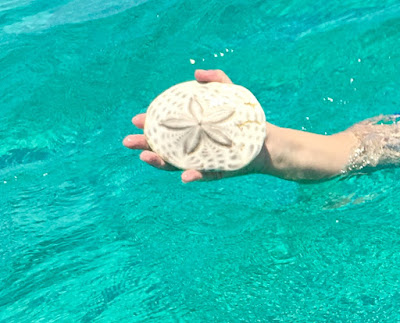




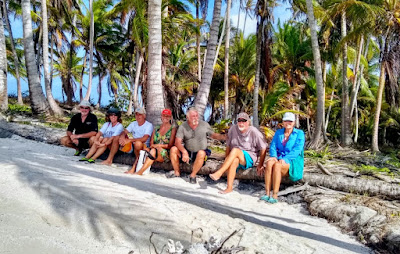
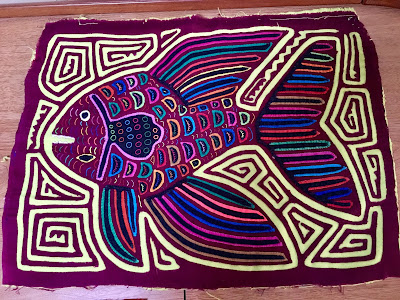



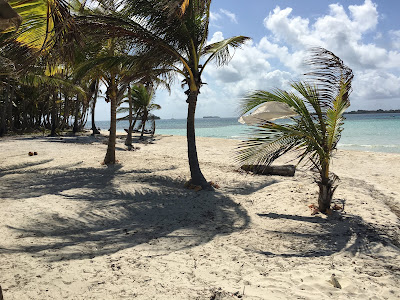

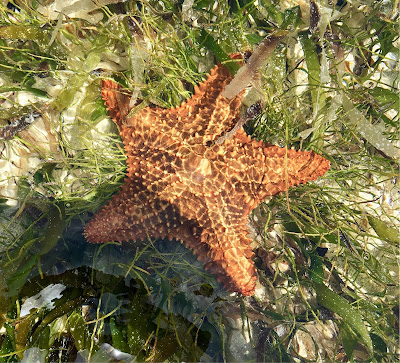
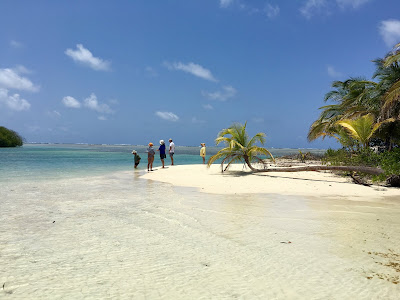
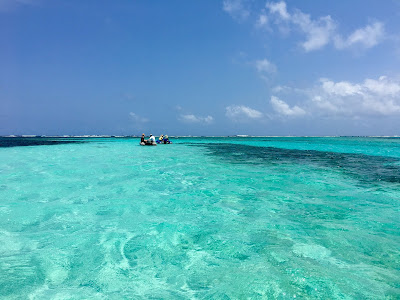
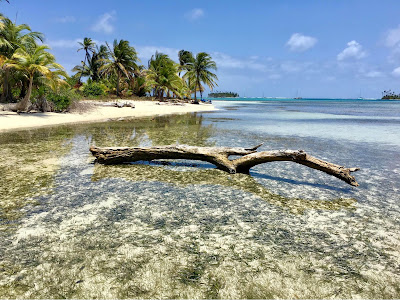
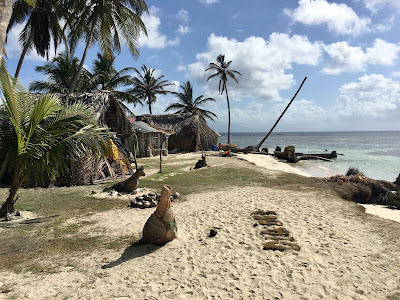
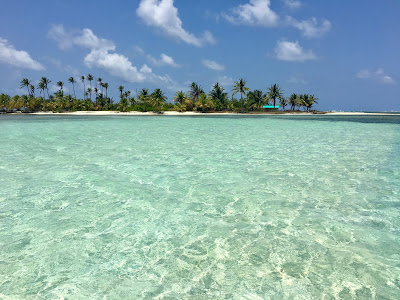
No comments:
Post a Comment